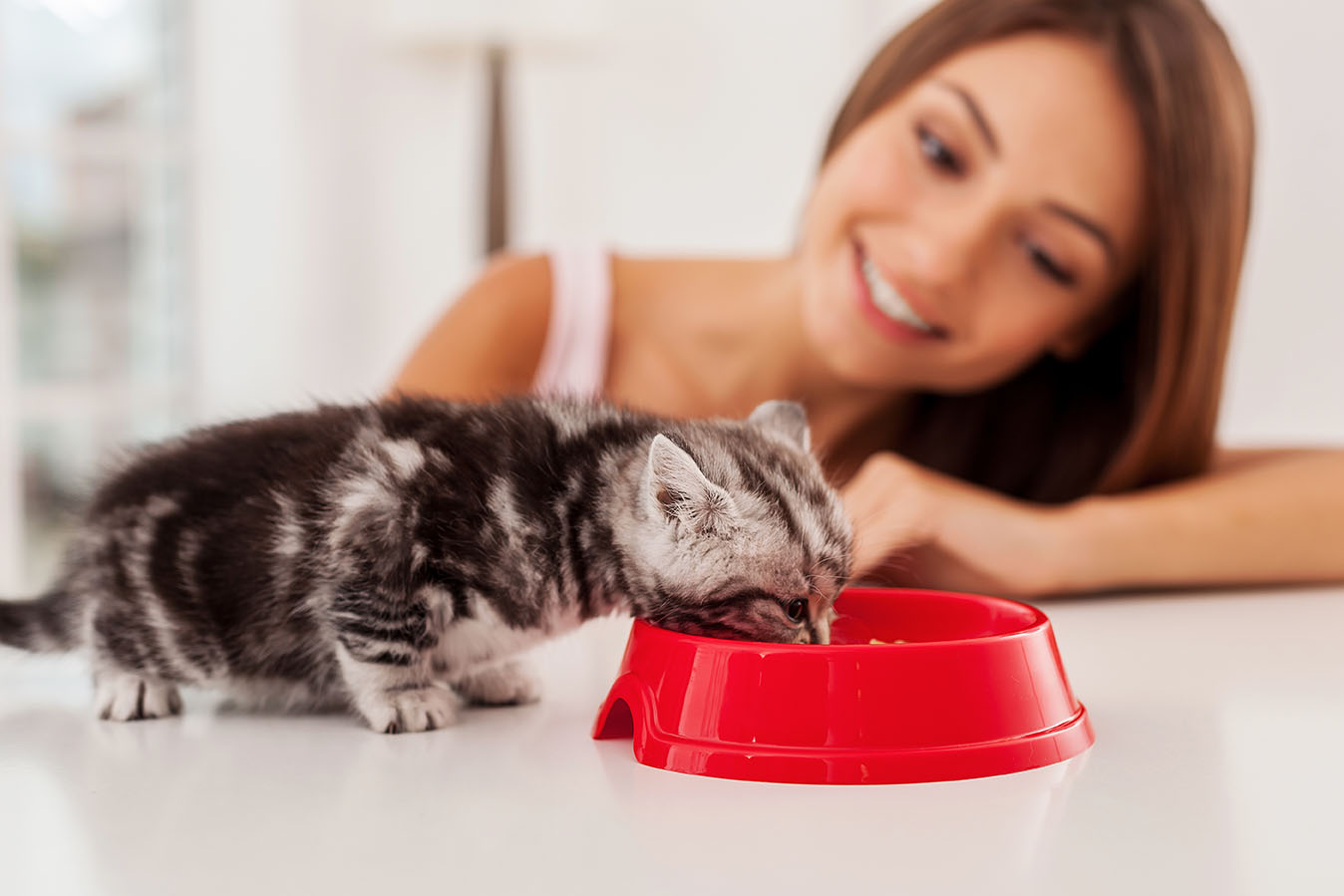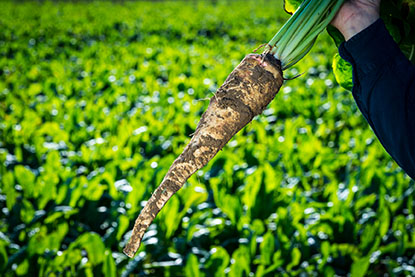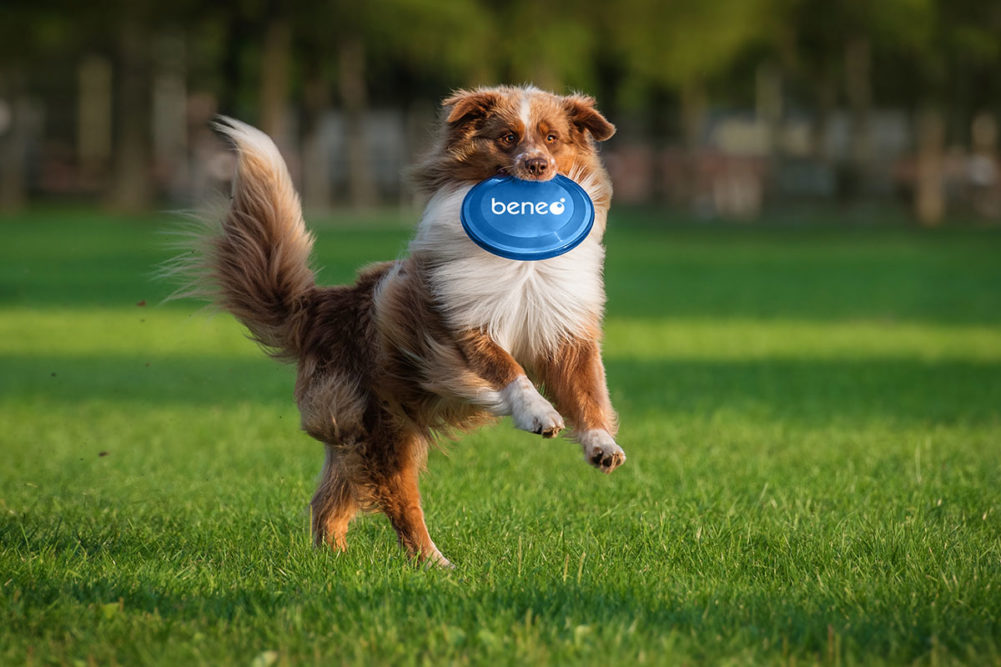For many years, being overweight or obese was a human concern. These days however, more and more companion animals are struggling with this condition. Here, Maygane Ronsmans, Ph.D., product manager, nimal nutrition at BENEO, explores how functional ingredients can help as a natural support for weight management in pets and why the choice of carbohydrate and fibre matters when it comes to long-term health.
Pets are increasingly overweight or obese
Numbers of overweight and obese companion animals have steadily increased over the last few decades and now exceed 50% in Western countries.[i] As with humans, there are many serious health consequences for overweight or obese pets. These include cardiovascular and metabolic diseases (e.g., glucose intolerance, diabetes), or skeletal associated disorders, leading to a negative impact on the pet’s — and owner’s — quality of life.
Pet owners are well aware of the dangers surrounding having overweight or obese companion animals. According to recent global survey figures from FMCG Gurus, six in 10 cat and dog owners were concerned about the weight of their pet and four in 10 said they are currently taking actions to help their pet lose weight.[ii]
Functional ingredients as part of the solution
Like in humans, prevention of obesity is always better than cure, and a balanced diet should remain the “gold standard.” Nevertheless, when weight loss is required, a multi-pronged approach that combines exercise along with energy-restricted diets is often key. In the context of obesity, the choice of nutrients in pet food can also make a difference, and including functional ingredients in a pet’s diet — such as slow-release carbohydrate isomaltulose and prebiotic chicory root fibres — can help with weight and blood glucose management.
Carbohydrate choice matters
Carbohydrates are an inherent part of our pets’ diets nowadays. Though, carbohydrates have not been created equal and they differ in composition, digestive properties and therefore glycaemic effects. A case in point is that high glycaemic carbohydrates, such as sucrose or cooked starches, are rapidly digested and absorbed in the first part of the small intestine, resulting in a fast and high blood glucose response. Low glycaemic carbohydrates on the other hand, are digested more slowly and lead to a lower blood glucose response. Having a slower blood glucose supply results in more balanced glycaemia, lower insulin peaks and overall better metabolic health. A 2012 study with dogs has further shown that low glycaemic diets can support weight loss.[iii]
 Source: ©G-Stock Studio - shutterstock
Source: ©G-Stock Studio - shutterstockFor global pet food producers looking for low glycaemic carbohydrates, isomaltulose can become a key part of their ingredient toolbox. Isomaltulose is a disaccharide of glucose and fructose derived from sugar beet that is characterised by a stronger glycosidic bond than that of standard sugar. Due to this specific linkage, it is more resistant to enzymatic hydrolysation in the intestine, therefore inducing lower glycaemic and insulin responses than regular sucrose as demonstrated in many species (e.g., humans, rodents and pigs).
A more recent publication from 2023 about three studies from Corbee et al[iv], has confirmed that isomaltulose is a suitable low glycaemic ingredient for use in dog food, triggering a lower blood glucose rise after consumption. The trials evaluated the digestion of isomaltulose as well as its glycaemic and insulinaemic effects in dogs, compared to other relevant carbohydrate sources. An in-vitro study of small intestinal tissue samples from three dogs showed that isomaltulose can be digested by canine intestinal enzymes, with a lower enzyme activity compared to high glycaemic carbohydrates, indicating a slower rate of hydrolysis.
In addition, two in-vivo studies compared the effects of isomaltulose, sucrose and maltodextrin in dogs. The results showed that isomaltulose significantly lowered blood glucose and insulin responses, compared to maltodextrin or sucrose – even after continuous feeding. All in all, this property makes isomaltulose a particularly interesting solution with the potential to support metabolic health and weight management in dogs. As isomaltulose is a relatively new feed ingredient, the opportunities to use it and to communicate its health benefits on pet food labelling need to be checked on a country-by-country basis.
The power of chicory root fibres
Other functional ingredients that enable blood sugar management in dogs[v],[vi],[vii],[viii], as well as weight management in pets[ix],[x],[xi] are BENEO’s natural chicory root fibres Orafti® Inulin and Oligofructose. These inulin-type fructans belong to the very few scientifically proven prebiotics[xii], that support a pet’s intestinal health and are linked with nutritional benefits that go beyond the gut. For example, studies show that including Orafti® Inulin and Oligofructose in a pet’s diet can curb their appetite, improve satiety and hence decrease voluntary food intake.[xiii],[xiv],[xv] In doing so, chicory root fibres can help to maintain the healthy condition of a pet’s body.
 Source: ©BENEO
Source: ©BENEOAdditionally, since inulin-type fructans are non-digestible carbohydrates and dietary fibres, they do not trigger a rise in postprandial blood glucose or insulin concentrations. As a result, they support blood sugar management in dogs. What’s more, studies in dogs have shown that feeding them with chicory prebiotics can allow for a lower blood sugar response after a meal[xvi],[xvii] and this benefit can extend to a subsequent meal taken hours later, even if that meal doesn’t include chicory root fibres;[xviii],[xix] which is called the second meal effect.
Global pet food producers can also combine isomaltulose and chicory root fibres in their formulations to take advantage of the ingredients’ complementary benefits for maintaining normal weight and metabolic health.
Quality production
BENEO produces its functional carbohydrates, including isomaltulose, and chicory root fibres in state-of-the-art and food-certified processing plants, which enables the highest product quality to be continuously guaranteed. Also, the non-GMO sugar beets and chicory roots are sourced from farmers in close proximity to the production sites. Isomaltulose as well as Orafti® Inulin and Oligofructose are natural ingredients, which are acknowledged as feed materials in the EU[xx]. They are suitable for use in both dry and wet pet foods, or in snacks.
With more companion animals struggling with being overweight or obese, pet food producers are turning to functional ingredients, such as BENEO’s, to help owners resolve these issues. By choosing the right ones, it is now possible to support weight and blood sugar management in pets more naturally, whilst supporting their long-term health.
If you are interested in learning more about isomaltulose and its pet food labelling options, please contact the BENEO team at contact@beneo.com.
[i] Read, C. (2019). The growth of pet obesity. The Veterinary record 185, 1–3. https://doi.org/10.1136/vr.l6498
German, A.J., Woods, G.R.T., Holden, S.L., Brennan, L. & Burke, C. (2018). Dangerous trends in pet obesity. Veterinary Record, 182: 25. https://doi.org/10.1136/vr.k2
[ii] FMCG Gurus: Pet Care Health October 2022
[iii] Mitsuhashi Y, Nagaoka D, Bigley KE, Umeda T, Otsuji K, Bauer JE (2012) Metabolic and Hormonal Alterations with Diacylglycerol and Low Glycemic Index Starch during Canine Weight Loss. ISRN Veterinary Science 2012: 750593. doi: 10.5402/2012/750593. https://www.ncbi.nlm.nih.gov/pmc/articles/PMC3671726/
[iv] Corbee, R. J., Mes, J. J., de Jong, G. A. H., van den Dool, R. T. M., Neumer, F., Theis, S., & Bosch, G. (2023). Brush border enzyme hydrolysis and glycaemic effects of isomaltulose compared to other saccharides in dogs. Journal of Animal Physiology and Animal Nutrition, 1– 9. https://doi.org/10.1111/jpn.13860
[v] Massimino SP, McBurney MI, Field CJ, Thomson ABR, Keelan M, Hayek MG, Sunvold GD (1998) Fermentable dietary fiber increases GLP-1secretion and improves glucose homeostasis despite increased intestinal glucose transport capacity in healthy dogs. Journal of Nutrition 128, 1786–1793.
[vi] Diez M, Hornick JL, Baldwin P, Istasse L (1997) Influence of a blend of fructo-oligosaccharides and sugar beet fiber on nutrient digestibility and plasma metabolite concentrations in healthy beagles. American Journal of Veterinary Research 58(11), 1238–1242.
[vii] Deng P, Beloshapka AN, Vester Boler BM, Swanson KS (2013). Dietary fibre fermentability but not viscosity elicited the 'second-meal effect' in healthy adult dogs. British Journal of Nutrition 110(5), 960-968. DOI: 10.1017/S0007114513000020
[viii] Alexander C, Cross TL, Devendran S, Neumer F, Theis S, Ridlon JM, Suchodolski JS, de Godoy MRC, and Swanson KS (2018) Effects of prebiotic inulin-type fructans on blood metabolite and hormone concentrations and faecal microbiota and metabolites in overweight dogs. British Journal of Nutrition. 120(6), 711–720. DOI: 10.1017/S0007114518001952
[ix] Bosch G, Verbrugghe A, Hesta M, Holst JJ, van der Poel AF, Janssens GP, Hendriks WH (2009) The effects of dietary fibre type on satiety-related hormones and voluntary food intake in dogs. British Journal of Nutrition 102(2), 318-325. DOI: 10.1017/S0007114508149194.
[x] Bosch G, Gilbert M, Beerda B (2022) Properties of Foods That Impact Appetite Regulation in Cats. Frontiers in Animal Science 3:33. https://www.frontiersin.org/articles/10.3389/fanim.2022.873924/full
[xi] Deb-Choudhury S, Bermingham EN, Young W, Barnett MPG, Knowles SO, Harland D, Clerens S, Dyer JM (2018) The effects of a wool hydrolysate on short-chain fatty acid production and fecal microbial composition in the domestic cat (Felis catus). Food & Function 9(8):4107–4121. https://www.ncbi.nlm.nih.gov/pubmed/30039140
[xii] Gibson G, Hutkins R, Sanders M et al. (2017) Expert consensus document: The International Scientific Association for Probiotics and Prebiotics (ISAPP) consensus statement on the definition and scope of prebiotics. Nature Reviews Gastroenterology & Hepatology 14, 491–502. https://doi.org/10.1038/nrgastro.2017.75
[xiii] Bosch G, Verbrugghe A, Hesta M, Holst JJ, van der Poel AF, Janssens GP, Hendriks WH (2009) The effects of dietary fibre type on satiety-related hormones and voluntary food intake in dogs. British Journal of Nutrition 102(2), 318-325. doi: 10.1017/S0007114508149194.
[xiv] Bosch G, Gilbert M, Beerda B (2022) Properties of Foods That Impact Appetite Regulation in Cats. Frontiers in Animal Science 3:33. https://www.frontiersin.org/articles/10.3389/fanim.2022.873924/full
[xv] Deb-Choudhury S, Bermingham EN, Young W, Barnett MPG, Knowles SO, Harland D, Clerens S, Dyer JM (2018) The effects of a wool hydrolysate on short-chain fatty acid production and fecal microbial composition in the domestic cat (Felis catus). Food & Function 9(8):4107–4121. https://www.ncbi.nlm.nih.gov/pubmed/30039140
[xvi] Massimino SP, McBurney MI, Field CJ, Thomson ABR, Keelan M, Hayek MG, Sunvold GD (1998) Fermentable dietary fiber increases GLP-1secretion and improves glucose homeostasis despite increased intestinal glucose transport capacity in healthy dogs. Journal of Nutrition 128, 1786–1793.
[xvii] Diez M, Hornick JL, Baldwin P, Istasse L (1997) Influence of a blend of fructo-oligosaccharides and sugar beet fiber on nutrient digestibility and plasma metabolite concentrations in healthy beagles. American Journal of Veterinary Research 58(11), 1238–1242.
[xviii] Deng P, Beloshapka AN, Vester Boler BM, Swanson KS (2013) Dietary fibre fermentability but not viscosity elicited the 'second-meal effect' in healthy adult dogs. British Journal of Nutrition 110(5), 960-968. DOI: 10.1017/S0007114513000020
[xix] Alexander C, Cross TL, Devendran S, Neumer F, Theis S, Ridlon JM, Suchodolski JS, de Godoy MRC, and Swanson KS (2018) Effects of prebiotic inulin-type fructans on blood metabolite and hormone concentrations and faecal microbiota and metabolites in overweight dogs. British Journal of Nutrition. 120(6), 711–720. DOI: 10.1017/S0007114518001952
[xx] EU Catalogue of Feed Materials (EU Regulation 2022/1104)




